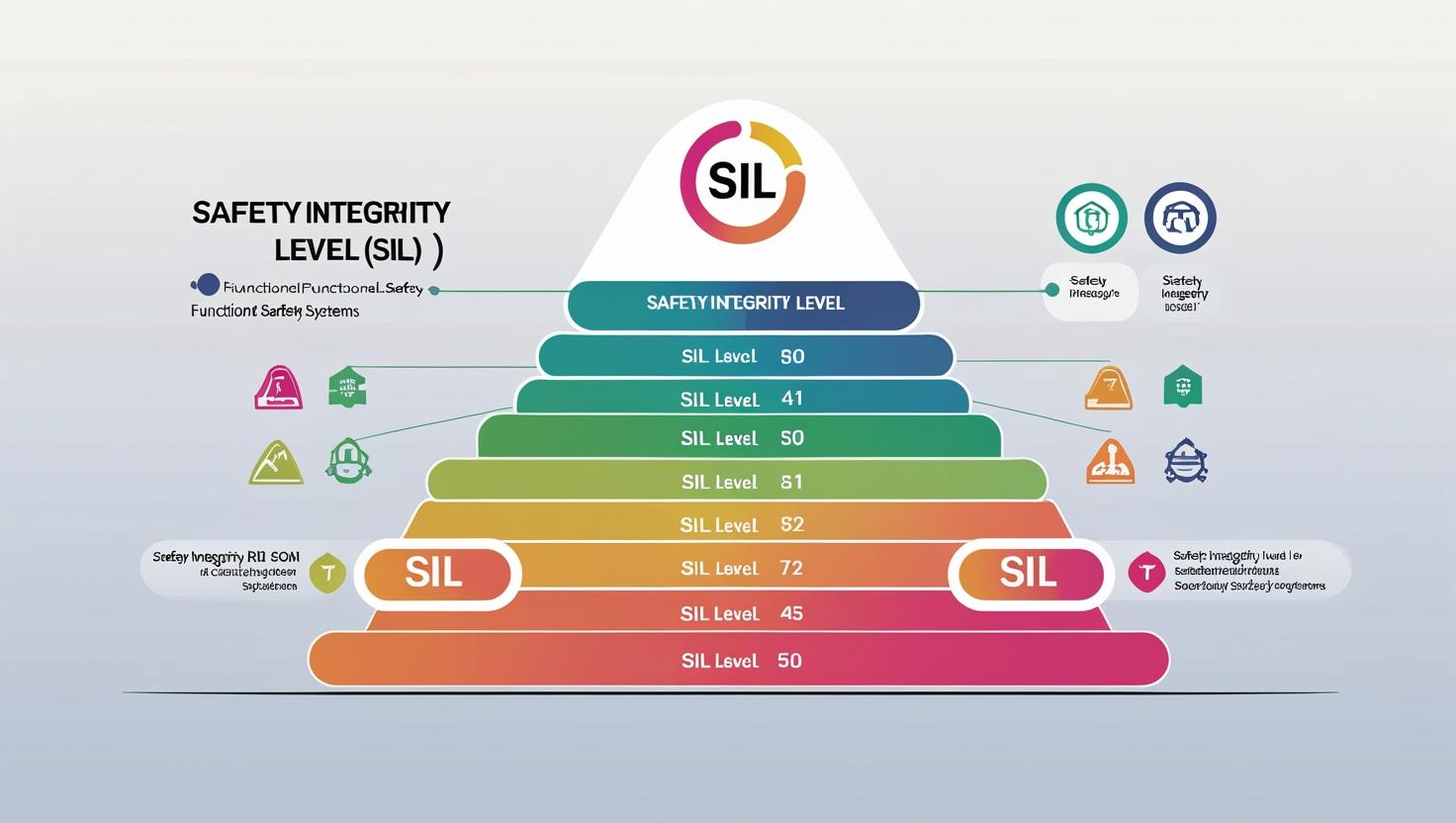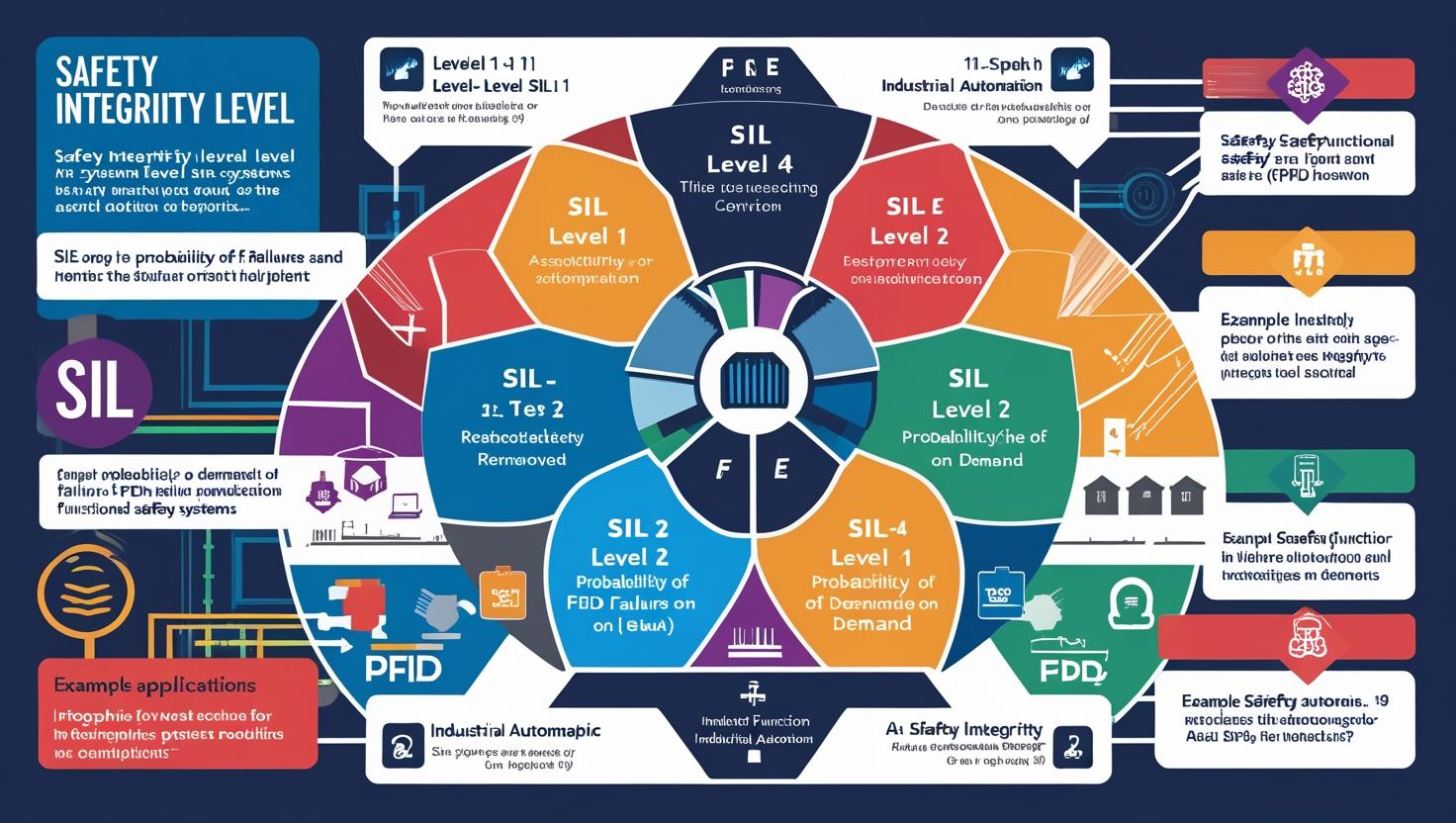In today’s rapidly evolving industrial landscape, ensuring the safety of complex systems is paramount. The Importance of Safety Integrity Level in functional safety systems cannot be overstated, as it serves as a cornerstone for designing and operating systems that protect human lives, the environment, and critical infrastructure. Functional safety systems are engineered to mitigate risks in industries such as oil and gas, automotive, aerospace, and manufacturing, where failures could lead to catastrophic consequences. At the heart of these systems lies the Safety Integrity Level (SIL), a quantifiable measure that defines the reliability and performance of safety functions. By establishing a framework for assessing and managing risks, SIL ensures that safety systems operate effectively under all conditions, safeguarding both people and assets.

Defining Safety Integrity Level and Its Role in Functional Safety
The Importance of Safety Integrity Level in functional safety systems begins with a clear understanding of what SIL entails. Safety Integrity Level is a discrete level (ranging from SIL 1 to SIL 4) that specifies the target level of risk reduction provided by a safety instrumented function (SIF). Each level corresponds to a specific range of probability of failure on demand (PFD) or probability of failure per hour (PFH), which measures the reliability of a safety system. SIL 1 represents the lowest level of safety integrity, while SIL 4 denotes the highest, typically applied in environments where failure could result in catastrophic consequences, such as nuclear power plants or large-scale chemical facilities.
Functional safety systems are designed to prevent hazardous events by detecting potential failures and initiating corrective actions. For instance, in an oil refinery, a safety instrumented system (SIS) might shut down a process if it detects abnormal pressure levels. The Importance of Safety Integrity Level in functional safety systems lies in its ability to quantify the reliability of these systems, ensuring they perform as intended when a hazardous event occurs. By assigning a SIL to a safety function, engineers can design systems with appropriate redundancy, diagnostic coverage, and fault tolerance to meet the required safety standards.
The process of determining a SIL involves a systematic risk assessment, where potential hazards are identified, and the required risk reduction is calculated. This assessment considers factors such as the severity of potential consequences, the frequency of hazardous events, and the likelihood of avoiding harm. By aligning safety functions with the appropriate SIL, organizations can ensure that their systems are neither under-engineered, leading to inadequate protection, nor over-engineered, resulting in unnecessary costs.
Why Safety Integrity Level Is Critical for Risk Reduction and Compliance
The Importance of Safety Integrity Level in functional safety systems is deeply tied to its role in reducing risks and ensuring compliance with international safety standards. In high-risk industries, such as oil and gas, chemical processing, and transportation, the consequences of system failures can be devastating, including loss of life, environmental damage, and significant financial losses. SIL provides a structured approach to mitigate these risks by setting clear performance targets for safety systems.
For example, in the automotive industry, the rise of autonomous vehicles has heightened the Importance of Safety Integrity Level in functional safety systems. Autonomous driving systems rely on complex sensors and control units to detect and respond to potential hazards, such as collisions or pedestrian crossings. By adhering to SIL requirements, manufacturers can ensure that these systems meet stringent safety standards, such as ISO 26262, which is specific to automotive functional safety. A SIL 3 or SIL 4 rating might be assigned to critical functions like emergency braking, ensuring a high level of reliability and reducing the likelihood of accidents.
Compliance with regulatory standards is another critical aspect of SIL. Regulatory bodies, such as the Occupational Safety and Health Administration (OSHA) in the United States or the European Union’s Machinery Directive, often mandate adherence to functional safety standards. By implementing SIL-based safety systems, organizations demonstrate due diligence in managing risks, which can protect them from legal liabilities and enhance their reputation. The Importance of Safety Integrity Level in functional safety systems, therefore, extends beyond technical reliability to encompass legal and ethical responsibilities.
Moreover, SIL facilitates a risk-based approach to safety management. Instead of applying a one-size-fits-all solution, organizations can tailor their safety systems to the specific risks associated with their operations. This targeted approach optimizes resource allocation, ensuring that safety measures are both effective and cost-efficient.
Methodologies for Determining Safety Integrity Level in Functional Safety Systems
Determining the appropriate Safety Integrity Level for a functional safety system is a complex process that requires a combination of qualitative and quantitative methodologies. The Importance of Safety Integrity Level in functional safety systems is evident in the rigorous processes used to assign and verify SIL ratings, ensuring that safety functions meet the required performance standards.
One of the primary methodologies for SIL determination is the Risk Graph method, which evaluates the severity, frequency, and exposure to a hazardous event. This qualitative approach allows engineers to estimate the required SIL based on the potential consequences of a failure and the likelihood of its occurrence. For instance, a chemical plant handling toxic substances might require a SIL 4 rating for its emergency shutdown system due to the severe consequences of a failure.
Another widely used approach is the Layer of Protection Analysis (LOPA), which quantifies the risk reduction provided by multiple layers of protection, such as alarms, mechanical safeguards, and safety instrumented systems. LOPA helps organizations determine whether the existing safety measures are sufficient or if additional measures are needed to achieve the required SIL. The Importance of Safety Integrity Level in functional safety systems is underscored by LOPA’s ability to balance safety and cost, ensuring that resources are allocated effectively.
Quantitative methods, such as Fault Tree Analysis (FTA) and Markov Analysis, are also employed to calculate the probability of failure for a safety function. These methods use mathematical models to assess the reliability of system components, including sensors, controllers, and actuators. By integrating these analyses, engineers can verify that the system meets the target SIL, reinforcing the Importance of Safety Integrity Level in functional safety systems.
Applications of Safety Integrity Level Across Various Industries
The Importance of Safety Integrity Level in functional safety systems is evident across a wide range of industries, each with unique safety challenges and requirements. In the oil and gas sector, for instance, SIL is critical for ensuring the safe operation of offshore platforms, pipelines, and refineries. Safety instrumented systems, such as emergency shutdown systems and fire and gas detection systems, rely on SIL to prevent accidents like explosions or leaks. A SIL 3 rating might be applied to a high-pressure gas pipeline, ensuring that the system can reliably shut down in the event of a rupture.
In the automotive industry, the Importance of Safety Integrity Level in functional safety systems is growing as vehicles become more autonomous and connected. Advanced driver-assistance systems (ADAS) and autonomous driving systems require high SIL ratings to ensure reliable performance in critical situations, such as obstacle detection or lane-keeping. Compliance with ISO 26262 ensures that these systems meet the necessary safety standards, protecting drivers, passengers, and pedestrians.
The aerospace industry also relies heavily on SIL to ensure the safety of aircraft systems. Avionics systems, such as flight control and navigation systems, must meet stringent SIL requirements to prevent failures that could lead to catastrophic crashes. Similarly, in the medical device industry, SIL is used to ensure the reliability of life-critical systems, such as ventilators and infusion pumps, where failures could have dire consequences for patients.
The Importance of Safety Integrity Level in functional safety systems is also evident in the railway industry, where train control systems and signaling systems must operate with high reliability to prevent collisions and derailments. By applying SIL-based safety measures, industries can mitigate risks and ensure the safe operation of complex systems.
Download PDF Brochure @ https://www.marketsandmarkets.com/pdfdownloadNew.asp?id=146773188
Challenges in Implementing Safety Integrity Level in Functional Safety Systems
While the Importance of Safety Integrity Level in functional safety systems is undeniable, implementing SIL-based safety measures comes with several challenges. One of the primary challenges is the complexity of SIL determination and verification. Conducting risk assessments and quantitative analyses requires specialized expertise and resources, which can be costly and time-consuming. Smaller organizations may struggle to allocate sufficient resources to achieve compliance with SIL requirements.
Another challenge is the integration of SIL-based systems into existing infrastructure. Legacy systems, which may not have been designed with functional safety in mind, often require significant upgrades to meet SIL standards. This can involve retrofitting equipment, updating software, or redesigning processes, all of which can be disruptive and expensive.
Maintaining SIL compliance over the lifecycle of a safety system is another significant challenge. The Importance of Safety Integrity Level in functional safety systems requires ongoing monitoring, maintenance, and testing to ensure that the system continues to meet its target SIL. Factors such as component aging, environmental conditions, and operational changes can degrade system performance, necessitating regular audits and updates.
Additionally, achieving a balance between safety and cost is a persistent challenge. Higher SIL levels, such as SIL 3 or SIL 4, require greater redundancy and diagnostic coverage, which can significantly increase costs. Organizations must carefully weigh the benefits of enhanced safety against the financial implications, ensuring that safety measures are both effective and sustainable.

The Future of Safety Integrity Level in Functional Safety Systems
As technology continues to advance, the Importance of Safety Integrity Level in functional safety systems is expected to grow. The rise of Industry 4.0, characterized by the integration of IoT, artificial intelligence, and big data, is transforming the way safety systems are designed and operated. SIL will play a critical role in ensuring the reliability of these advanced systems, particularly in applications like smart factories and autonomous vehicles.
Emerging technologies, such as machine learning and predictive maintenance, are also influencing the implementation of SIL. By leveraging data analytics, organizations can improve the accuracy of risk assessments and optimize the performance of safety systems. For example, predictive maintenance can help identify potential failures before they occur, enhancing the reliability of SIL-rated systems.
The Importance of Safety Integrity Level in functional safety systems will also be shaped by evolving regulatory standards. As industries adopt new technologies, regulatory bodies are updating safety standards to address emerging risks. Organizations must stay abreast of these changes to ensure ongoing compliance and maintain the integrity of their safety systems.
Furthermore, the global push for sustainability and environmental responsibility is highlighting the Importance of Safety Integrity Level in functional safety systems. By preventing accidents and minimizing environmental impact, SIL-based safety systems contribute to sustainable operations, aligning with broader corporate and societal goals.
FAQs
What is a Safety Integrity Level (SIL)?
A Safety Integrity Level (SIL) is a measure of the reliability and performance of a safety instrumented function, ranging from SIL 1 to SIL 4. It quantifies the level of risk reduction provided by a safety system, ensuring it performs reliably under specified conditions.
Why is the Importance of Safety Integrity Level in functional safety systems emphasized?
The Importance of Safety Integrity Level in functional safety systems lies in its ability to reduce risks by ensuring safety systems meet specific reliability targets. It helps prevent hazardous events, ensures compliance with standards like IEC 61508, and protects lives and assets.
How is the appropriate SIL determined for a safety system?
The appropriate SIL is determined through risk assessment methodologies, such as Risk Graph or Layer of Protection Analysis (LOPA), which evaluate the severity, frequency, and exposure to hazards. Quantitative methods like Fault Tree Analysis may also be used.
Which industries rely on Safety Integrity Level?
Industries such as oil and gas, automotive, aerospace, railway, and medical devices rely on SIL to ensure the reliability of safety-critical systems, such as emergency shutdown systems, autonomous driving functions, and avionics.
What are the challenges of implementing SIL-based safety systems?
Challenges include the complexity of SIL determination, integration with legacy systems, maintaining compliance over time, and balancing safety with cost. These require specialized expertise, resources, and ongoing maintenance.
